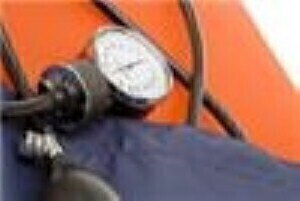News & Views
More accurate blood pressure reading with ambulatory technique, say experts
Sep 26 2012
The prevalence of hypertension can be more precisely measured using ambulatory blood pressure monitoring, says an editorial by experts.
The Centers for Disease Control and Prevention (CDC) has traditionally used a sphygmomanometer to measure brachial artery pressure since 1960.
Doctors William B White, president of the American Society of Hypertension Inc (ASH), Thomas D Giles, a former president of ASH, and colleagues have stated unease regarding this current methodology and its restrictions in precisely identifying hypertension in patients.
In early September of this year, CDC released its Morbidity and Mortality Weekly Report which acknowledged hypertension as the leading cardiovascular disease risk factor.
Statistics from the National Health and Nutrition Examination Survey report show that around 36 million people have uncontrolled high blood pressure, with 26 million seeing a doctor at least twice the past year.
Almost 22 million people know they have high blood pressure, but don't have it under control. Some 16 million people take medicine, but still don't have their blood pressure under control.
"Ambulatory Blood Pressure Monitoring Should Be Included in the National Health and Nutritional Examination Survey (NHANES)," was published in the Journal of the American Society of Hypertension. The doctors strongly advocate that the CDC use a more responsive and particular tool for assessing blood pressure in its national surveys.
In order to improve the national statistics on hypertension, they recommend the inclusion of ambulatory blood pressure monitoring in the NHANES's methodology.
The technique has been identified by multiple hypertension specialists and physicians as being a precise and superior method for detecting hypertension.
Using this advanced method might uncover many extenuating factors that affect the influence the correct identification of this condition, such as nocturnal hypertension, resistant hypertension and white coat hypertension.
In addition to clinical office blood pressure measurements, the method allows physicians and health care workers to correctly make a diagnosis.
Used as a screening tool in national health surveys, the method will offer a more exact depiction of the hypertension epidemic in the US. This would inevitably lead to more suitable national health initiatives to lower rates of uncontrolled hypertension.
Posted by Neil Clark
Digital Edition
Lab Asia 31.2 April 2024
April 2024
In This Edition Chromatography Articles - Approaches to troubleshooting an SPE method for the analysis of oligonucleotides (pt i) - High-precision liquid flow processes demand full fluidic c...
View all digital editions
Events
May 05 2024 Seville, Spain
InformEx Zone at CPhl North America
May 07 2024 Pennsylvania, PA, USA
May 14 2024 Oklahoma City, OK, USA
May 15 2024 Birmingham, UK
May 21 2024 Lagos, Nigeria










.jpg)







